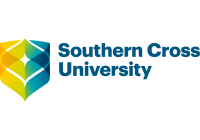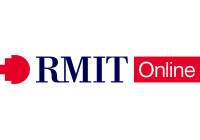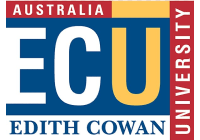Are you a project manager looking for a more effective way to manage your team's projects? Have you heard of Project Scrum? If not, you're missing out on a powerful methodology that can help your team deliver better results faster. In this article, we'll take a deep dive into what a Project Scrum is and how it can benefit your team in project management in Australia.
In short, a Project Scrum is a framework that enables teams to work collaboratively on complex projects by breaking them down into smaller, more manageable tasks. It is an Agile methodology designed to help teams work more efficiently, focusing on delivering value to the customer at every stage of the project. By using Scrum, teams can improve communication, collaboration, and productivity, leading to better project outcomes.
If you're curious about how a Project Scrum can benefit your team, you've come to the right place. In this article, we'll explore the key elements of Scrum, how it differs from traditional project management approaches, and how it can help your team achieve more in less time. So, let's dive into the world of Project Scrum and see what it can do for your team!
Quick Links To Online Project Management Degree Courses
Southern Cross University
Master of Project Management online
- 2 years part-time
- $2,990 per unit, FEE-HELP available
- Jan, Mar, May, July, Aug, Oct
RMIT Online
Graduate Diploma in Project Management
- 16 months intensive, part-time
- Jan, Mar, May, July, Aug, Oct
- $3,840 per course, FEE-HELP available
Edith Cowan University
Graduate Certificate of Project Management Online
- 6 months (minimum) part-time
- Jan, Mar, May, Jul, Sept & Nov
- $13,020 FEE-HELP available
What Is Scrum?
Scrum is a method for managing projects that places a focus on collaboration, adaptability, and ongoing development. It was first created for use in software development projects; however, it is very adaptable and may be utilised in a broad variety of businesses and projects.
Agile project management is the foundation of Scrum, which was developed from those ideas. It places an emphasis on the customer's complete pleasure, functioning software, and the capacity to swiftly adapt to any shifting requirements. Scrum was developed to facilitate improved collaboration between members of a team, which in turn helps to ensure that projects are finished on schedule and without exceeding their allotted spending.
Scrum is made up of a few different parts, the most important of which are the product backlog, the sprint backlog, the daily scrum, the sprint review, and the sprint retrospective. The Scrum framework includes a number of different components, each of which performs a distinct function and assists teams in maintaining their focus on the objectives of the projects they are working on.
The product backlog is a list of all of the features and activities that need to be finished in order for the project to be considered successful. A subset of the product backlog is referred to as the sprint backlog, and it is comprised of items that have been prioritised for completion within a particular sprint.
The daily scrum is a short meeting that takes place each day during which members of the team discuss their progress and plan their work for the next day. At the conclusion of each iteration, the team will have a meeting called the "sprint review," during which they will present the finished work to the stakeholders. The team gets together for a meeting called the sprint retrospective, during which they discuss the most recent sprint and look for ways to make improvements.
How Does Scrum Work?
The completion of a project in Scrum is accomplished by dividing it up into shorter, more manageable phases known as sprints. The duration of a single sprint can range anywhere from one to four weeks, and the primary objective of each sprint is to accomplish the completion of a certain number of features or tasks taken from the product backlog.
The product backlog is an ordered list of all the features and tasks that need to be finished in order for the project to be considered successful. It is the responsibility of the product owner to create and maintain the product backlog, and they must work closely with the development team to ensure that it is maintained up to date.
The development team will choose a group of features or tasks from the product backlog at the beginning of each sprint so that they may focus on completing those items during that particular sprint. The name given to this subset is the "sprint backlog." Within the allotted amount of time, it is the responsibility of the development team to finish the activities that are listed in the sprint backlog.
Throughout the duration of each sprint, the development team convenes once each day for what is known as the "daily scrum." Discussion of progress, identification of any problems or roadblocks, and planning of the work for the following day are the goals of the daily scrum. The daily scrum ensures that everyone on the team is aware of what needs to be accomplished and helps the team stay focused on the goals they have set for themselves.
The team has a sprint review meeting after the conclusion of each iteration of the sprint. At this meeting, the team will display the finished work to the stakeholders and will solicit comments from those present. The product backlog is then updated based on this input, and future sprints are better prepared as a result.
After the sprint review, the team will get together for a meeting to discuss the last sprint. During this discussion, the team discusses the most recent sprint in depth and pinpoints areas in which they may make improvements.
The purpose of the sprint retrospective is to determine what aspects of the most recent sprint were successful for the team, which aspects were less successful, and what kinds of adjustments need to be done in order to enhance the team's performance in subsequent sprints.
Scrum Roles
The product owner, the development team, and the scrum master are the three key roles that are defined by the Scrum framework. Within the context of the Scrum framework, each job is tasked with certain obligations, and through collaborative effort, these responsibilities contribute to the effective completion of projects.
1. Product Owner
The product owner is the one who is in charge of creating the product backlog and assigning priorities to its items. They collaborate extensively with the various stakeholders to gain an understanding of the requirements of the customers and make certain that the product backlog reflects these requirements. Additionally, it is the product owner's responsibility to see to it that the development team fully comprehends the product backlog's needs as well as its priorities.
The product owner is responsible for a number of tasks, including the creation and maintenance of the product backlog, as well as the acceptance of the work that was accomplished during each sprint. This entails looking at the finished product and determining whether or not it satisfies the acceptance standards that were established.
2. Development Team
The responsibility for delivering the finished work at the end of each sprint lies with the development team. The team is cross-functional, which means that it possesses all of the essential skills and knowledge to successfully perform the tasks that are listed in the sprint backlog.
The development team is accountable for organising and managing their work during each sprint in order to guarantee that they will meet the deadlines for completing the items listed in the sprint backlog. In addition to this, the team is accountable for ensuring that the finished work is of a high quality and for testing and verifying each individual feature or job.
3. Scrum Master
The Scrum master is the one who is accountable for overseeing the proper implementation of the Scrum framework. They collaborate with the development team and the product owner to assist the Scrum events, check that the team is functioning efficiently, and eliminate any barriers that may be stopping the team from achieving their goals.
The scrum master's responsibilities include, but are not limited to, instructing the team on the concepts and practises of Scrum in addition to facilitating the Scrum events. They assist the team in improving their performance and identifying areas in which further development is necessary.
The Scrum roles are intended to make certain that every member of the team is accountable for certain tasks and that everyone is cooperating with one another to accomplish the objectives of the project. The success of the Scrum framework is dependent on the contributions of several parties, including the product owner, the development team, and the scrum master.
Scrum Events
Scrum events are time-boxed activities that take place during the course of a sprint. These activities are planned to make it easier for people to communicate with one another, work together, and make progress towards the sprint objective. There are five events that make up Scrum:
1. Sprint Planning
The first thing that happens in each sprint is the planning for the sprint. The development team and the product owner collaborate in order to create the sprint objective and decide which items from the product backlog will be included in the sprint backlog. The team also provides an estimate of the amount of work that will be necessary to finish each item in the sprint backlog.
2. Daily Scrum
During the course of the sprint, there will be a meeting called the Daily Scrum that will last for fifteen minutes each day. The development team gets together to talk about how things are doing, make plans for the next day, and address any potential roadblocks that could get in the way of their reaching their sprint objective.
3. Sprint Review
At the conclusion of each sprint is when we do the Sprint Review. The development team presents the finished work to the product owner and any other relevant stakeholders, and then collects their comments on the project. After that, the product owner decides whether or not to accept the finished work depending on whether or not it satisfies the acceptance criteria.
4. Sprint Retrospective
At the conclusion of each iteration, there is a meeting called the Sprint Retrospective that is held. Following the sprint, the team discusses what went well and what may be improved upon. The scrum master is in charge of facilitating the meeting, and during it, the team collaborates to determine the particular steps they should take during the subsequent sprint in order to enhance their performance.
5. Backlog Refinement
The process of refining the backlog is a continual one that takes place all during the sprint. The product owner and the development team collaborate on the process of reviewing and updating the product backlog. This helps to ensure that the product backlog accurately reflects the most recent needs and priorities.
Scrum events are time-boxed by design, which means that they are restricted in time and have a predetermined amount of time allotted to them. This helps guarantee that the team maintains its focus and continues to make forwards towards the sprint's ultimate objective.
When carried out appropriately, the Scrum events offer a structure that paves the way for productive communication and cooperation, both of which are necessary for the completion of the project successfully.
Benefits of Scrum
Teams and organisations who use Scrum may expect to reap a variety of benefits as a result of doing so. The following are some of the most important advantages:
1. Increased Productivity
Instead of delaying the delivery of a finished product until the conclusion of the project, the Scrum methodology places an emphasis on providing a subset of the final product at the end of each iteration, known as a sprint. This strategy assists teams in maintaining their attention and motivation, which ultimately results in higher output.
2. Greater Flexibility
Scrum was developed to be a fluid and adaptable framework that enables teams to respond effectively to shifting priorities and requirements. Both the product backlog and the sprint backlog are subject to change at any moment, and the team may even make adjustments to the sprint backlog while it is in progress.
3. Better Communication and Collaboration
Scrum activities, such as the Daily Scrum and the Sprint Review, are intended to make it easier for members of the team to communicate with one another and work together. This helps to guarantee that everyone is working towards the same objective and that any problems or roadblocks are discovered and resolved as fast as possible.
4. Increased Transparency
The use of Scrum allows for more visibility into not just the progress and status of the project but also the performance of the team. At the end of each sprint, the product owner is able to view the work that has been performed and offer input, and the team is able to track their progress towards achieving the sprint target.
5. Improved Quality
Scrum places an emphasis on continuous testing and validation, which assists in the identification of problems at an earlier stage in development. This, in turn, leads in a product that is of a higher quality and that satisfies the demands and expectations of the consumer.
6. Higher Customer Satisfaction
Scrum places an emphasis on providing a product that satisfies the needs and expectations of the client, and it also makes it possible to get regular feedback and make improvements. Because of this, both the degree of pleasure experienced by customers and the possibility of future purchases are boosted.
Scrum in Project Management Australia
Over the past several years in Australia, the agile method of software development known as Scrum has seen an increase in popularity among project management professionals due to the numerous benefits it offers to businesses.
1. Agile Project Management
Agile project management is a collaborative and iterative approach to project management that emphasises flexibility and adaptability. Scrum is one of the most popular frameworks for implementing agile project management in Australia and is used across a wide range of industries and projects.
2. Scrum in Software Development
Scrum is particularly well-suited for software development projects, as it allows for frequent testing and validation of the product throughout the development process. This helps identify issues early on, reducing the likelihood of costly errors later in the development cycle.
3. Scrum Training and Certification
There are a number of training and certification programs available in Australia for Scrum practitioners, including the Certified Scrum Master (CSM) and Certified Scrum Product Owner (CSPO) certifications. These programs provide a comprehensive understanding of the Scrum framework and its application in project management.
4. Scrum in Government Projects
Scrum has also gained traction in government projects in Australia, where its flexibility and adaptability make it well-suited for projects with changing requirements and priorities. The Australian government has even developed its agile project management framework, the Digital Transformation Agency (DTA) Digital Service Standard, which incorporates Scrum principles.
5. Scrum Adoption in Australian Organisations
Many Australian organisations have successfully adopted Scrum, including Atlassian, one of Australia's largest software companies. Atlassian has implemented Scrum across its entire organisation to manage everything from product development to marketing campaigns.
6. Scrum Challenges in Australia
Despite its many benefits, there are some challenges to implementing Scrum in Australia. One of the biggest challenges is finding skilled practitioners who can implement the framework effectively. Another challenge is ensuring that Scrum is integrated effectively with other project management methodologies, such as Waterfall.
How to Implement Scrum in Your Team
It is possible that implementing Scrum in your team will be a difficult process; nevertheless, if you have the appropriate strategy and support, it has the potential to be a very successful method for improving your team's productivity, communication, and overall performance. When putting Scrum into practise in your team, the following procedures should be followed:
1. Define Your Goals and Objectives
It is imperative that you first set your goals and objectives for the project or product that you will be working on before beginning the implementation of Scrum. You'll be able to determine the most important features and needs, and then prioritise your work based on that information.
2. Create Your Scrum Team
A Scrum Master, a Product Owner, and a Development Team should make up the members of your Scrum team. It is important that each individual on the team understand their specific duties and responsibilities.
3. Conduct Scrum Training
Make sure that every member of the team has a solid grasp of the Scrum framework and its guiding principles. Either through formally structured training programmes or by on-the-job training, this can be accomplished.
4. Plan Your Sprint
The Sprint is the central component of Scrum. It is a condensed period of work that is limited in terms of both time and duration. During this time, the team focuses on achieving a predetermined set of goals and objectives. You need to give careful consideration to the planning of your Sprint. You need to make sure that the work can be completed within the allotted time limit and that it is in line with the overarching aims and objectives of the project.
5. Hold Daily Stand-Up Meetings
Daily stand-up meetings are an integral component of the Scrum project management methodology. These sessions give members of the team the chance to offer progress reports, resolve any difficulties, and plan the work for the following day.
6. Conduct Sprint Reviews and Retrospectives
Conduct a Sprint review at the conclusion of each iteration to evaluate the team's progress in relation to the set goals and objectives and to pinpoint any areas that might use improvement. Carry out a Sprint retrospective in order to think back on the process and come up with ways in which the team's performance may be improved.
7. Implement Scrum Tools
Your project may be more easily managed with the assistance of a number of different Scrum tools, including as burndown charts, Scrum boards, and backlog management applications. These tools can assist you in monitoring progress, recognising problems, and making decisions based on data.
8. Embrace Continuous Improvement
Scrum is a framework for continuous improvement, and it is essential that your team adopt this attitude in order to be successful. Foster an environment that values feedback and learning, and remain flexible and open to making adjustments as circumstances dictate.
Scrum vs. Traditional Project Management
Scrum and conventional project management have the same overarching goal of effectively delivering completed projects, but they go about accomplishing this objective in very different ways. The following is a list of important distinctions between Scrum and traditional methods of project management:
1. Approach
Traditional project management is a linear approach that involves a sequential process of planning, executing, monitoring, and controlling. In contrast, Scrum is an Agile methodology that follows an iterative process of planning, executing, reviewing, and adapting.
2. Roles and Responsibilities
In traditional project management, a project manager is typically responsible for planning, executing, and controlling the project. The team members are responsible for completing their assigned tasks. In Scrum, the roles of the Scrum Master, Product Owner, and Development Team are clearly defined, and the team members are cross-functional, with each member having multiple responsibilities.
3. Planning and Documentation
Traditional project management places a strong emphasis on detailed planning and documentation, often creating extensive project plans and documentation before work begins. In contrast, Scrum relies on short-term planning and documentation, focusing on the immediate work to be done in the next Sprint.
4. Flexibility
Traditional project management is less flexible, with project scope or plan changes often requiring extensive approvals and documentation. In Scrum, changes are expected and encouraged, with the team adapting to changes quickly through continuous planning and communication.
5. Feedback and Communication
Traditional project management often limits feedback and communication to scheduled meetings or reports. In Scrum, feedback and communication are encouraged throughout the entire process, with daily stand-up meetings and Sprint reviews providing regular opportunities for team members to communicate and collaborate.
6. Time and Cost Management
Traditional project management strongly emphasises time and cost management, often using complex tracking and reporting systems. In Scrum, time and cost are managed through Sprints, with the team focusing on delivering a working product at the end of each Sprint.
While both Scrum and traditional project management can effectively deliver projects successfully, Scrum offers a more flexible, collaborative, and iterative approach that is well-suited for complex projects requiring frequent changes and adaptations.
Conclusion
In conclusion, Scrum is a framework for managing projects that is gaining popularity all around the world, including in Australia. It is a method of managing projects that emphasises collaboration and uses an iterative process.
This method enables teams to produce high-quality products in a shorter amount of time. Scrum is a project management methodology that helps teams work more efficiently and effectively by breaking down large projects into smaller, more manageable chunks. This methodology also improves transparency and communication among team members.
Scrum can be the answer you're searching for if you want to simplify the way you handle projects and boost the efficiency of your team at the same time. Scrum's emphasis on flexibility, cooperation, and continuous improvement may help your team stay one step ahead of the competition and achieve excellent outcomes, especially when confronted with projects that are difficult and complicated.
Do you have any experience utilising Scrum as a framework for managing projects? What were your experiences, and how did they affect the productivity and performance of the team that you were on? Leave a comment with your opinions in the box provided below!
Content Summary
- In short, a Project Scrum is a framework that enables teams to work collaboratively on complex projects by breaking them down into smaller, more manageable tasks.
- It is an Agile methodology designed to help teams work more efficiently, focusing on delivering value to the customer at every stage of the project.
- By using Scrum, teams can improve communication, collaboration, and productivity, leading to better project outcomes.
- Scrum is a method for managing projects that places a focus on collaboration, adaptability, and ongoing development.
- A subset of the product backlog is referred to as the sprint backlog, and it is comprised of items that have been prioritised for completion within a particular sprint.
- The daily scrum is a short meeting that takes place each day during which members of the team discuss their progress and plan their work for the next day.
- Within the allotted amount of time, it is the responsibility of the development team to finish the activities that are listed in the sprint backlog.
- Throughout the duration of each sprint, the development team convenes once each day for what is known as the "daily scrum."
- The team has a sprint review meeting after the conclusion of each iteration of the sprint.
- After the sprint review, the team will get together for a meeting to discuss the last sprint.
- The purpose of the sprint retrospective is to determine what aspects of the most recent sprint were successful for the team, which aspects were less successful, and what kinds of adjustments need to be done in order to enhance the team's performance in subsequent sprints.
- The product owner, the development team, and the scrum master are the three key roles that are defined by the Scrum framework.
- The Scrum master is the one who is accountable for overseeing the proper implementation of the Scrum framework.
- The scrum master's responsibilities include, but are not limited to, instructing the team on the concepts and practises of Scrum in addition to facilitating the Scrum events.
- The success of the Scrum framework is dependent on the contributions of several parties, including the product owner, the development team, and the scrum master.
- Scrum events are time-boxed activities that take place during the course of a sprint.
- The product owner and the development team collaborate on the process of reviewing and updating the product backlog.
- When carried out appropriately, the Scrum events offer a structure that paves the way for productive communication and cooperation, both of which are necessary for the completion of the project successfully.
- Teams and organisations who use Scrum may expect to reap a variety of benefits as a result of doing so.
- Instead of delaying the delivery of a finished product until the conclusion of the project, the Scrum methodology places an emphasis on providing a subset of the final product at the end of each iteration, known as a sprint.
- Scrum was developed to be a fluid and adaptable framework that enables teams to respond effectively to shifting priorities and requirements.
- Both the product backlog and the sprint backlog are subject to change at any moment, and the team may even make adjustments to the sprint backlog while it is in progress.
- The use of Scrum allows for more visibility into not just the progress and status of the project but also the performance of the team.
- Over the past several years in Australia, the agile method of software development known as Scrum has seen an increase in popularity among project management professionals due to the numerous benefits it offers to businesses.
- Scrum is one of the most popular frameworks for implementing agile project management in Australia and is used across a wide range of industries and projects.
- Scrum is particularly well-suited for software development projects, as it allows for frequent testing and validation of the product throughout the development process.
- There are a number of training and certification programs available in Australia for Scrum practitioners, including the Certified Scrum Master (CSM) and Certified Scrum Product Owner (CSPO) certifications.
- Many Australian organisations have successfully adopted Scrum, including Atlassian, one of Australia's largest software companies.
- It is possible that implementing Scrum in your team will be a difficult process; nevertheless, if you have the appropriate strategy and support, it has the potential to be a very successful method for improving your team's productivity, communication, and overall performance.
- A Scrum Master, a Product Owner, and a Development Team should make up the members of your Scrum team.
- Make sure that every member of the team has a solid grasp of the Scrum framework and its guiding principles.
- Your project may be more easily managed with the assistance of a number of different Scrum tools, including as burndown charts, Scrum boards, and backlog management applications.
- Scrum is a framework for continuous improvement, and it is essential that your team adopt this attitude in order to be successful.
- Scrum and conventional project management have the same overarching goal of effectively delivering completed projects, but they go about accomplishing this objective in very different ways.
- Traditional project management often limits feedback and communication to scheduled meetings or reports.
- In Scrum, feedback and communication are encouraged throughout the entire process, with daily stand-up meetings and Sprint reviews providing regular opportunities for team members to communicate and collaborate.
- Traditional project management strongly emphasises time and cost management, often using complex tracking and reporting systems.
- In Scrum, time and cost are managed through the use of Sprints, with the team focusing on delivering a working product at the end of each Sprint.
- While both Scrum and traditional project management can effectively deliver projects successfully, Scrum offers a more flexible, collaborative, and iterative approach that is well-suited for complex projects requiring frequent changes and adaptations.
- In conclusion, Scrum is a framework for managing projects that is gaining popularity all around the world, including in Australia.
- It is a method of managing projects that emphasises collaboration and uses an iterative process.
- Scrum is a project management methodology that helps teams work more efficiently and effectively by breaking down large projects into smaller, more manageable chunks.
- Scrum can be the answer you're searching for if you want to simplify the way you handle projects and boost the efficiency of your team at the same time.
- Scrum's emphasis on flexibility, cooperation, and continuous improvement may help your team stay one step ahead of the competition and achieve excellent outcomes, especially when confronted with projects that are difficult and complicated.
FAQs About Scrum Project
Scrum is a specific framework for implementing Agile principles in project management. Agile is a broader philosophy that emphasises collaboration, flexibility, and continuous improvement in all areas of an organisation.
The entire team is responsible for the success of a Scrum project, including the product owner, Scrum master, and development team. Each team member has a specific role in delivering the project on time and within budget.
A Scrum sprint typically lasts two to four weeks, although the exact duration can vary depending on the project and team.
Yes, Scrum can be adapted to various projects and industries, including non-software projects.
Yes, Scrum is well-suited for small teams as well as large teams. The framework can be adapted to meet the needs of any size team or project.





